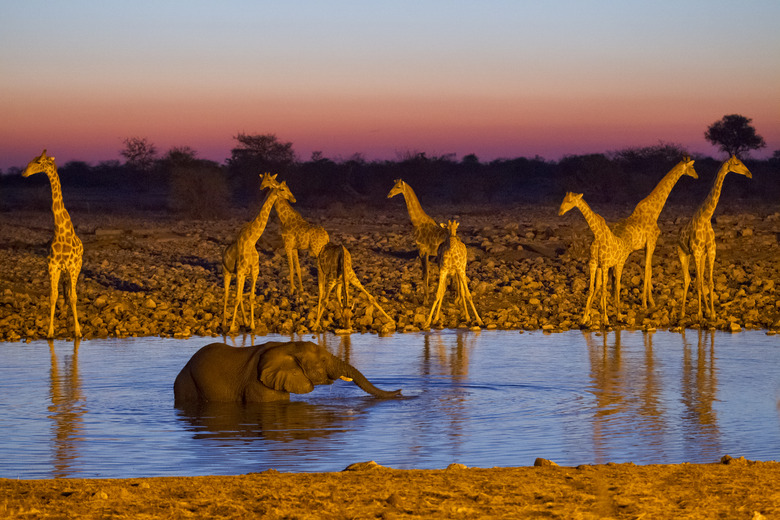Interspecific Competition Vs. Intraspecific Competition
All organisms need nutrients, energy and space to grow, and sexually reproducing organisms want to mate. Often the resources these organisms need are in short supply; a given ecosystem may only have so many nutrients and so much space, for example. Scarcity leads to competition not only between species, but within species as well.
Interspecific competition occurs between species, while intraspecific competition occurs between individuals within the same species.
Intra and Inter Prefixe Meanings
Intra and Inter Prefixe Meanings
The prefix intra- means within, while inter- means between. If you break the two terms down, "intraspecific" just means within a species, while "interspecific" means between them. Consequently, interspecific competition is all about competition between two or more species, while intraspecific competition involves different individuals of the same species. Remembering the prefixes is an easier way to remember what the two words mean, especially since both prefixes are very common in scientific terminology.
Competition for Resources
Competition for Resources
Competition happens when not enough of a given resource is available to go around. That resource could be one of many things. Trees in a forest, for example, need access to light; by growing tall they ensure their own access but deny it to others. Bacteria in a petri dish all need sugars and nutrients to grow, but both are present in limited amounts. Cheetahs compete for prey with other predators in some parts of their range. Whether it be space, food or nutrients, a resource in short supply engenders competition.
Interspecific Competition
Interspecific Competition
Interspecific competition may take place by interference or by exploitation. Interference is more direct; the two species actively fight or interfere with each other. Black walnut trees, for example, secrete compounds that inhibit the growth of other plants. Exploitation, by contrast, is a more-indirect form where different species compete not by directly attacking or interfering with each other, but by exploiting the resource and thus leaving less available for their competitors.
Intraspecific Competition
Intraspecific Competition
Like interspecific competition, intraspecific competition is highly density-dependent, meaning that the more-densely populated the ecosystem, the more competition will occur. Intraspecific competition also features interference, where organisms directly fight for the resource, and exploitative competition, where they compete indirectly. Among sexually reproducing species, competition for mates is often an especially dramatic form of intraspecific competition. Male peacocks and elk both exhibit striking features, which they evolved as a result of sexual selection.
Cite This Article
MLA
Brennan, John. "Interspecific Competition Vs. Intraspecific Competition" sciencing.com, https://www.sciencing.com/interspecific-competition-vs-intraspecific-competition-10026401/. 23 April 2018.
APA
Brennan, John. (2018, April 23). Interspecific Competition Vs. Intraspecific Competition. sciencing.com. Retrieved from https://www.sciencing.com/interspecific-competition-vs-intraspecific-competition-10026401/
Chicago
Brennan, John. Interspecific Competition Vs. Intraspecific Competition last modified March 24, 2022. https://www.sciencing.com/interspecific-competition-vs-intraspecific-competition-10026401/
